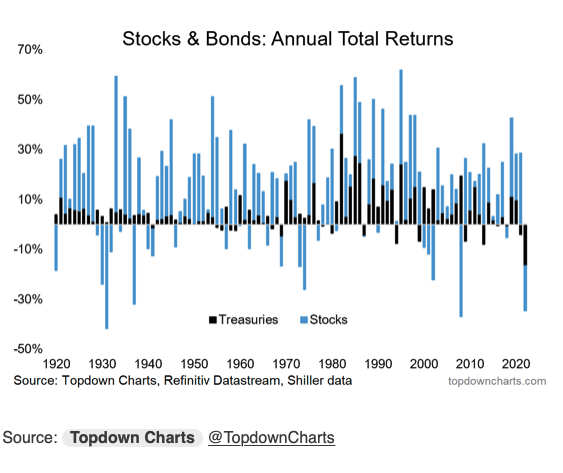2022 was not a good year for holding passive exposures, but a close look at the details shows that the dispersion across asset classes, factors, and sectors was large and could be exploited. The 60/40 allocation decision was problematic, but adding greater exposure to some factors and sectors that are viewed as defensive would have cushioned the overall decline.
Holding stocks with dividends was a winner. Low volatility strategies lost less than 5% and a value focus was down only 5%. A simple strategy of holding an equal weighted portfolio would have outperformed the SPX index by close to 800 bps. Th switch from growth to value and a focus away from overvalued pandemic high-flyers was a good defensive choice. This switch was a derisking strategy based on rates rising.
Holding energy stocks would have outperformed SPX by over 75%. Utilities, a classic defensive sector, gained 150 bps for the year. Commodities were another winner albeit with large swings and volatility.
The answer for 2023 is to look for factor and sector exposures that will offset the downside potential from holding the market-weighted benchmark. Following a simple trend model can identify some of the sector and factor exposures that can serve as defensive allocations and still offer return opportunities.
We know that history will repeat and 2023 will be very different from 2022; however, the dispersion across sectors and factors will continue. This offers investors the chance to exploit return differences. Even if all of the dispersion is not collected, the large differences offers ways to extract return.



No comments:
Post a Comment